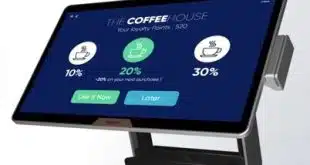As the payments industry waits a few more weeks for the expected July launch of the Federal Reserve’s FedNow real-time payments platform, the backer of a real-time payments service that is entering its sixth year readies for more business.
Operated by The Clearing House Payments Co. LLC, the Real Time Payments network, known as RTP, is poised for accelerated growth thanks to the increase in awareness and expectations associated with FedNow, which will add a second national real-time payment option. RTP has seen its volume grow by 5% in the first quarter and the value of transactions made through the network increase by 8% from the fourth quarter of 2022,
“We’ve done a lot of education, but we’re probably not a household name,” admits Jim Colassano, New York City-based TCH’s senior vice president of product development and strategy. The Federal Reserve’s entry into real-time payments and the awareness associated with the Fed will only help more financial institutions learn about RTP, he suggests. “The fact that we and the Fed are in the game sends the right message to financial institutions and banks,” he says.

Colassano says the RTP network is available to approximately 10,000 U.S. financial institutions, just like FedNow. Though TCH is owned by 21 large commercial banks, most of the RTP participants—more than 335 are listed on the TCH Web site—are connected via one of the core processors, Fiserv Inc., FIS Inc., or Jack Henry & Associates Inc., he says. Some 90% of them are small financial institutions, community banks, or credit unions.
The RTP network stands out because it already is live and has established more than 60% penetration into existing U.S. demand deposit accounts, says Erika Baumann, director of commercial banking and payments and healthcare payments, at Datos Insights, the new name for the combined Aite-Novarica and RBR research firms.
“While not ubiquitous, RTP is established in payment processes across industry segments and business sizes,” Baumann tells Digital Transactions News by email.
The RTP network also has a higher transaction limit. FedNow launches with a $100,000 transaction limit, though the cap can stretch to a maximum of $500,000. The credit limit on the RTP network is $1 million. “There are advantages to being a first mover,” Baumann says.
Even after six years of operation, the RTP network is evolving, Colassano says. Going into the second half of 2023, he expects a steady flow of banks and credit unions onboarding onto the network. To make that easier, the RTP network is already integrated with the core processors, making it a simple process to add RTP access, he says.
Activity on the RTP network also is expected to increase, especially as awareness of real-time payments and its capabilities grows. Probably in July, the RTP network will surpass the 500-million-transaction mark for total volume since its launch, Colassano says.
“RTP does stand to benefit from FedNow for the simple fact that the more banks, accounts, and businesses that are enabled to transact via a faster payment method, [the more it] makes a faster payment closer to being the new ‘normal’ payment,” Baumann says. “While legacy payments types (ACH, wire, checks) don’t go away near term, volumes are being displaced. This is a benefit for the financial landscape at large.”
TCH also is testing a request-for-payment capability, labeled RFP, a capability that FedNow is expected to launch with. This action, as defined by the Fed, enables a business to present a bill through a customer’s mobile banking app. The customer can then approve the prefilled information about the payment amount and the requestor in a single step.
That makes it simple for the consumer and creates an end-to-end transaction flow that billers can use to improve their systems, Colassano says. “It will start with bill pay, but a lot of banks will enable business-to-business payments,” he adds. “Business payments typically are notoriously bad when it comes to the timing of clearing and settlement.”
Other uses are payroll and merchant settlement. “When we first launched the network, the one area [where] we thought there might be zero traction was payroll,” Colassano says. “We thought ACH figured it out. We were completely wrong.” Earned wage access has proven popular and emergency payroll, too, he says.




